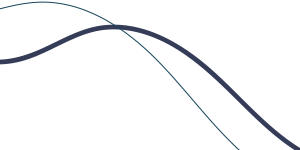
Frequently asked questions
Converting your RRSP to a RRIF (Registered Retirement Income Fund)
A key decision as you approach retirement. Here are some guidelines to help you determine the right time:
-
By the End of the Year You Turn 71
- The government requires you to convert your RRSP into a RRIF or another retirement income option (such as an annuity) by **December 31 of the year you turn 71**. If you don’t convert it by then, the entire RRSP amount becomes taxable income for that year. -
When You Need Income
- You can convert your RRSP to a RRIF anytime before you turn 71, typically when you start needing regular income during retirement. A RRIF provides flexibility because you can decide how much to withdraw (above the minimum), allowing you to manage your taxes and income more efficiently. -
Tax Efficiency
- While your RRSP grows tax-deferred, withdrawals from a RRIF are taxable. If you’re in a lower tax bracket in retirement than during your working years, it makes sense to delay withdrawals until you’re in a position to benefit from lower tax rates. -
To Avoid Mandatory Withdrawals
- Once you convert to a RRIF, you are required to withdraw a minimum amount each year, which is taxable. If you don’t need income yet, you may want to wait as long as possible before converting to avoid triggering taxable withdrawals early.
Summary
-
Mandatory
: Convert by age 71.
-
Flexibility
: Convert earlier if you need income.
-
Tax planning
: Consider timing based on your income and tax situation.
Talking to Frank Gasper can help you assess the best time for your specific situation.
Frank Gasper can help you assess the best time for your specific situation. Converting your RRSP to a RRIF is a straightforward process. Here's a step-by-step guide:
-
Contact Your Financial Institution or Frank Gasper
- Reach out to the financial institution that holds your RRSP. They’ll guide you through the conversion process and provide the necessary paperwork. -
Complete the Required Forms
- You’ll (we will) fill out a RRIF application form. Your financial institution will provide this, and it will involve selecting your withdrawal options, naming beneficiaries, and confirming details like your account information. -
Choose Investments for Your RRIF
- Just like with your RRSP, you can invest your RRIF in various assets (stocks, bonds, GICs, mutual funds, etc.). You can either keep the same investments as in your RRSP or we can advise adjustments to them based on your income needs and risk tolerance. -
Set Up a Withdrawal Schedule
- With a RRIF, you must take out a ** minimum withdrawal ** each year based on a percentage of your account balance and your age (or your spouse’s age, if you choose). You can set the frequency of withdrawals (monthly, quarterly, or annually).
- You can withdraw more than the minimum, but any additional amount you withdraw will have tax withheld. -
Start Receiving Income
- Once the RRSP is converted, you’ll begin receiving regular withdrawals based on your chosen schedule. Keep in mind that each withdrawal is considered taxable income.
Key Things to Remember:
- No Immediate Tax: You won't be taxed on the RRSP conversion itself. Only withdrawals from your RRIF are taxed as income.
- Minimum Withdrawal Rules: The Canadian government sets a minimum amount you must withdraw annually from your RRIF, starting the year after you convert. You need not take money out the year conversion occurs. This means not until end of your 72nd year if you don't need to.
Consulting a Financial Advisor
If you’re unsure about investment choices, tax implications, or how much to withdraw, a financial advisor can help you tailor the conversion to your retirement goals.
A Registered Disability Savings Plan (RDSP) is a Canadian government-registered savings plan designed in 2008 to help people with disabilities and their families save for long-term financial security. It offers several financial benefits, including matching government contributions, to encourage savings for individuals with disabilities.
Here are key features of an RDSP:
1. Tax-Deferred Growth:
- The money invested in an RDSP grows tax-deferred. While contributions themselves are not tax-deductible, any income earned within the plan (like interest, dividends, or capital gains) is not taxed until the funds are withdrawn.
2. Government Contributions:
- The Canadian government offers two major types of contributions to RDSPs:
- Canada Disability Savings Grant (CDSG): The government may match contributions made by family or friends up to 300%, depending on the beneficiary’s family income and contribution amount.
- Canada Disability Savings Bond (CDSB): For low-income individuals, the government may contribute up to $1,000 annually without requiring any contributions from the account holder.
3. Lifetime Limits:
- There is a
lifetime contribution limit of $200,000
for an RDSP, but there is no annual limit on how much can be contributed in any given year.
4. Withdrawals:
- Funds can be withdrawn when needed, typically to support the beneficiary’s future expenses. Withdrawals consist of contributions, government grants, bonds, and any investment growth. However, withdrawals must follow specific rules to avoid triggering the repayment of government contributions (if made within certain time frames).
5. Eligibility for the Disability Tax Credit (DTC):
- The beneficiary must be eligible for the Disability Tax Credit (DTC), which means having a severe and prolonged physical or mental disability as certified by a medical professional.
The purpose of the RDSP is primarily aimed at providing **long-term financial security** for people with disabilities, helping ensure that they have financial support later in life. It’s a powerful savings tool because of the government's matching programs, especially for families with lower incomes, and it encourages long-term savings for individuals with disabilities.
-
Eligibility for the Disability Tax Credit (DTC)
:
- The individual must be eligible for the Disability Tax Credit (DTC) . This means they have a severe and prolonged impairment in physical or mental functions, which must be certified by a medical practitioner. CSR Wealth can help attain the DTC.
-
Canadian Residency
:
- The beneficiary (person for whom the RDSP is being opened) must be a resident of Canada at the time the plan is opened.
-
Age
:
- The beneficiary must be under the age of 60 when the RDSP is opened.
- Government grants and bonds (Canada Disability Savings Grant and Bond) are only available until the beneficiary turns 49 .
-
Social Insurance Number (SIN)
:
- The beneficiary must have a valid Social Insurance Number (SIN) , and the individual opening the RDSP (if different) must also have a SIN.
-
Financial Institution
:
- The RDSP must be opened at a financial institution that offers RDSP accounts, such as banks or investment firms.
Once these criteria are met, contributions can be made to the RDSP to save for the long-term financial security of the individual with a disability, and government matching contributions (grants) and income-tested bonds may also be received.
Banking & Credit

Investing & Wealth Management
What is a TFSA, and how does it work?A TFSA (Tax-Free Savings Account) allows Canadians to invest tax-free. Contributions are not tax-deductible, but withdrawals are tax-free.
How is a TFSA different from an RRSP?A TFSA is for tax-free growth with after-tax contributions, while an RRSP defers taxes until withdrawal and provides tax deductions on contributions.
What are the best investments for beginners in Canada?ETFs, index funds, GICs, and robo-advisors (e.g., Wealthsimple) are good low-risk options for beginners.
How do I buy stocks in Canada?Open a brokerage account (Questrade, Wealthsimple, TD Direct Investing), deposit funds, research stocks, and place a trade order.
What is an ETF, and how does it compare to mutual funds?An ETF (Exchange-Traded Fund) is a low-cost, passive investment traded like a stock. Mutual funds are actively managed and typically have higher fees.
What is the annual TFSA contribution limit?The 2025 limit is $7,000. Unused room carries forward. The total lifetime contribution limit for someone who was 18 in 2009 is $95,000.
How are capital gains taxed in Canada?50% of capital gains are taxable at your marginal tax rate. Losses can offset gains to reduce taxes.
How do I open an online brokerage account?Choose a broker, submit an application, verify your identity, fund the account, and start investing.
What is the difference between active and passive investing?Active investing involves frequent buying and selling to beat the market, while passive investing follows market trends using ETFs or index funds.
What are the fees associated with mutual funds?Fees include Management Expense Ratios (MERs), typically 1-2.5%, and possible front- or back-end load fees when buying or selling.
Retirement Planning
What is the CPP, and when should I start collecting it?The Canada Pension Plan (CPP) provides retirement benefits based on contributions. You can start at 60 (reduced benefits) or delay until 70 for higher payouts.
How much do I need to save for retirement in Canada?It depends on your lifestyle. A common rule is 70% of pre-retirement income, but $1 million+ is often recommended for comfortable retirement.
What is the difference between an RRSP and a LIRA?An RRSP is for retirement savings with flexible withdrawals. A Locked-In Retirement Account (LIRA) holds pension funds with restricted withdrawals until retirement.
How does the RRIF withdrawal schedule work?At 71, an RRSP must be converted into a RRIF, which requires minimum annual withdrawals based on a government-set percentage.
Can I retire early in Canada?Yes, but you need significant savings to cover expenses. Early CPP withdrawals reduce benefits. Alternative income sources like rental properties help.
How do Old Age Security (OAS) and the Guaranteed Income Supplement (GIS) work?OAS is a government pension for seniors 65+. GIS provides additional income for low-income retirees. Both have clawback thresholds.
What happens to my RRSP when I turn 71?You must convert it to a RRIF or buy an annuity. If left in the RRSP, the full amount is taxed as income in the year you turn 71.
How can I minimize taxes on retirement income?Use a mix of TFSA withdrawals, RRSP withdrawals, and non-registered investments. Consider income splitting and delaying CPP/OAS.
What are the best retirement savings strategies for self-employed Canadians?Use RRSPs, TFSAs, and Individual Pension Plans (IPPs). Consider corporate investments and tax-efficient withdrawal strategies.
How does inflation affect retirement planning?Inflation reduces purchasing power over time. To protect against it, invest in equities, real estate, and inflation-linked assets like dividend stocks and REITs.

